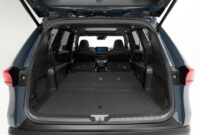When you think of a ten-cylinder BMW M5, you inevitably think of the BMW M5 E60. Its S85B50 engine, with technology derived from competition, developed 507 hp of atmospheric power and touched 8,000 rpm from a five-liter displacement and 10-cylinder V-shaped engine. A mechanical prodigy, even if it was hampered by some reliability problems. However, the protagonist of this article also has ten cylinders, but It’s a BMW M5 E39. And no, this car is much more than just a simple engine swap.
The title is not a mistake. The engine that lives in the engine compartment of this BMW M5 E39 is a W10. Ten cylinders in double V. Specifically, we talk about two VR5 engines with a common crankshaft. This engine never existed, at least officially. No manufacturer has sold W10 engines. And yet this W10 engine was key in the development of the family of W12 and W16 engines, which the Volkswagen Group would launch at the beginning of the 20th century. I know we had your curiosity, but we know that now we have your full attention.
Everything indicates that the engine is the union of two VR5 engines with a common crankshaft.
This BMW M5 is a very special car. It is the test mule of Dr. Sabine Willeke, a specialist in engine development and prototyping, who was secretly hired by none other than one Dr. Ferdinand Piëch. In 1998, the Volkswagen Group did not have any car in its product range where an engine with the characteristics of the W10 could be tested without refitting, modifying or significantly altering the vehicle’s chassis and suspensions. Therefore, they decided to use a BMW M5 E39, and get rid of its V8 engine.
The engine fits perfectly into the car’s engine compartment, and according to the Belgian dealership that sells it, this engine developed 500 hp and 550 Nm of torque without the need for supercharging. A notable increase in power compared to the original 400 hp of the BMW M5 E39. Of course, the weight of the car increased by almost 150 kilograms because of the new engine, very heavy. With everything, according to GDM MotorsPiëch was so enamored with this vehicle that he even used it as a commuter car for a while.
The direct consequence of this car were the W12 and W16 engines, icons of Bentley and Bugatti.
The W10 engine of this BMW M5 served Volkswagen to demonstrate that it was possible to create high-power double V-engines, creating modular units from its existing 5 and 6-cylinder mechanics, giving rise to some of the most iconic engines in the world. past decade: who is capable of denying the work of art and technique that the W8 of the Volkswagen Passat, the W12 of the Volkswagen Phaeton or the W16 of Bugatti are and were? The price of this carwhose legal status is questionable because of its prototype status, is unknown.
GDM Motors will only sell it to genuinely interested buyers, and they won’t sell it cheap: these kinds of very special trial mules are real unicorns.





